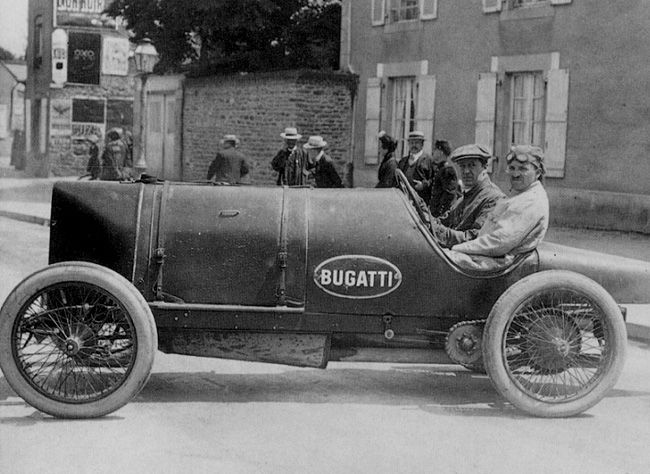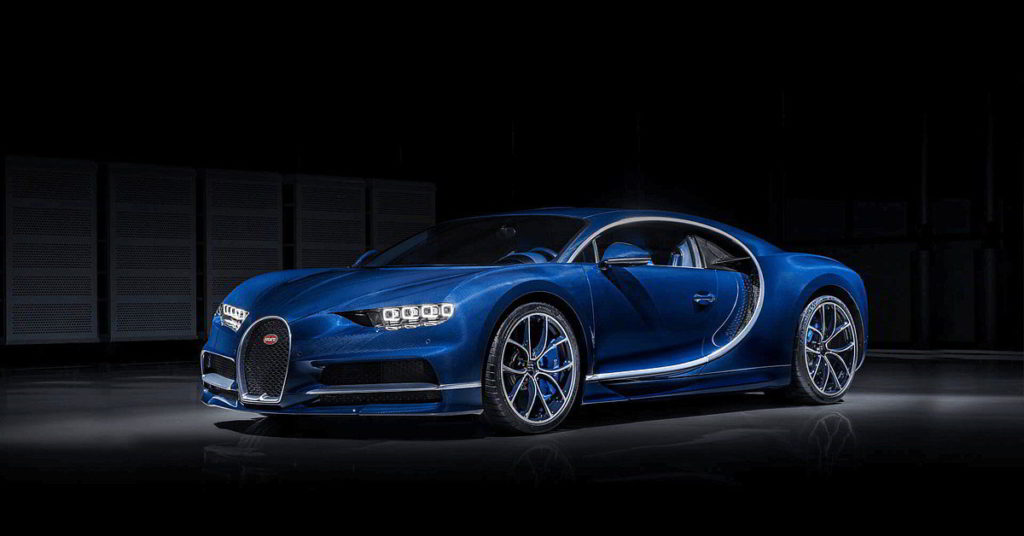Born in 1881, Ettore Bugatti is the founder and creator of the Bugatti brand, well known for its Veyron model, which was voted “The Greatest Car of the Past 20 Years” by BBC’s Top Gear viewers. Even in the early 1900s, Bugatti’s name quickly became synonymous with speed, power, and incredible capabilities.
Bugatti himself was a man known to push the limits. Captivated by motor cars, he once fitted a trike with an engine, presumably to increase its top speed (and fun factor). Driven by a passion for improvement, he built the Type 2 and previewed it at the 1901 International Exhibition in Milan. There, it won an award from the French Automobile Club and ignited a fire in Bugatti. In 1909, the Bugatti company was officially founded, with its headquarters located in Molsheim, Alsace in France.

Image Source: Wikimedia Commons
Why is it called Bugatti?
Bugatti proudly bore the name of its founder for nearly 50 years before the company shut down in 1952. Romano Artoli attempted to bring the Bugatti tradition back to life in the 1980s, but misfortune forced the company to close its doors once more in 1995.
Volkswagen finally had the strength necessary to imbue new life into the Bugatti brand in 1998, forever establishing the Bugatti name in the annals of automotive history with the invention of the Veyron platform in 2005. The factory returned to Molsheim, Alsace and the brand has been prospering under VW’s care ever since.

Image source: Bugatti
Bugatti’s Logo
Now that you know the full name of Bugatti’s founder, it’s easy to see where the backwards “E” attached to the “B” in the brand’s logo comes from. Bugatti is one of only few manufacturers that hasn’t changed their logo drastically over the years. This could be in part due to its multiple resurrections, but all the same, the same stylized “EB” decorates all Bugatti models.

Early versions of the emblem included the “EB” letters, along with “Bugatti” written in all caps, centered on a red field. Encircled by a white ring complete with 60 red dots, the red field stands for all the features you might already associate the Bugatti brand with: power, pleasure, and passion. Sources explain that the white ring represents elegance and the black initials stand for excellence and courage. With this in mind, it’s easy to see why most of the population associates the excellence of the Bugatti lineup with superb achievement in the automotive industry.
The Historical Importance of Bugatti
Bugatti, like many other European manufacturers, found itself part of a larger historical story during wartime. Some of the airplanes flown in World War I were fueled by a Bugatti engine. BMW and Mercedes also made airplane engines during the first World War. It wasn’t uncommon that a car brand’s factory would be repurposed to help support the war efforts.
SEE ALSO: Why is Porsche Called Porsche?
Though not soaring in the sky, Bugatti’s engines did race across the tarmac, and in fact, Bugatti had racing in mind from the very first model. Bugatti’s first race car was completed in 1903 and was named the Type 5. Shortly after the first World War, a blue Bugatti was driven by Hellé Nice, who won the first women’s grand prix in 1929. And now, with the achievements of the Bugatti Veyron and Chiron twins, it’s easy to see that Ettore Bugatti himself would be proud.
What’s on the roadmap for Bugatti? Space travel? Comment below!
Rebecca Henderson is the published author and professional editor at The Kreativ Space. Best expressing herself through the written word, she enjoys the smell of burning rubber as well. Rebecca hopes to shift your world perspective through her words, because looking out the same window every day hardly makes for an interesting life.






Leave a Reply